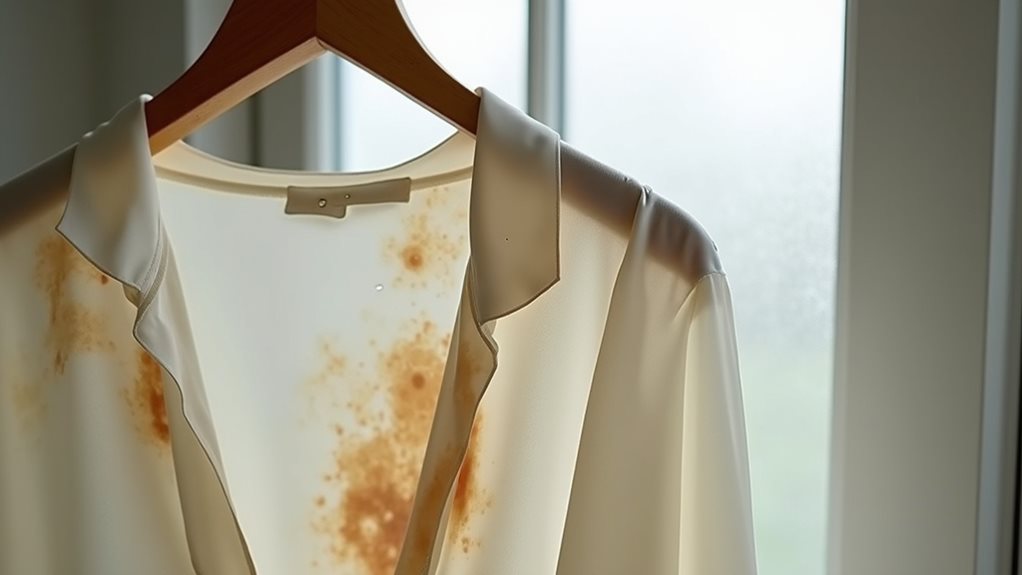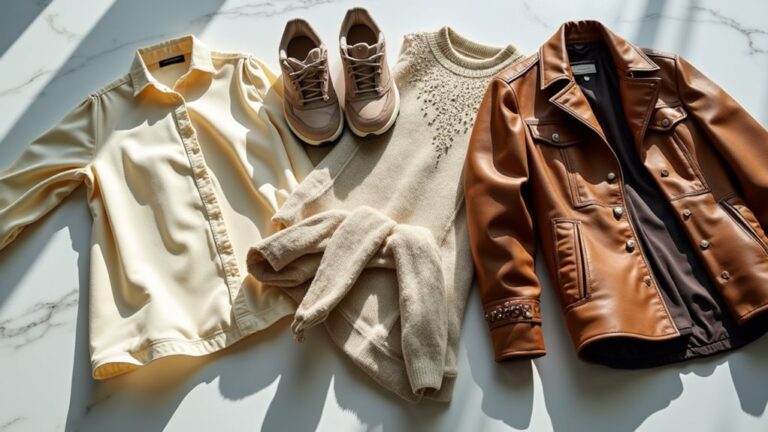When your dry clean only clothes get wet, you’re witnessing expensive fabric chaos unfold before your eyes – fibers immediately contract and distort, colors bleed into streaky disasters, and that luxurious silk or wool texture transforms into something rough and unwearable. Your garment will shrink unevenly, lose its shape permanently, and develop puckers or curls that make it look like abstract art gone wrong. Understanding the full extent of this damage can help you respond appropriately.
Immediate Fabric Damage and Structural Changes
When water hits a “dry clean only” garment, it’s like watching a perfectly choreographed dance fall apart in slow motion – the fabric begins its unfortunate transformation almost immediately.
I learned this lesson the hard way when my favorite wool blazer met an unexpected downpour 😅. The fibers, which were meant to be pampered by professional dry clean processes, suddenly contract and distort when moisture penetrates them.
You’ll notice your garment lose shape within minutes, as water causes the delicate structure to shrink unevenly. Silk blouses develop unsightly puckering, while wool sweaters transform into miniature versions of themselves.
The worst part? This damage often happens faster than you can reach for a towel.
Unlike the controlled chemical solvents used in professional dry cleaning, water penetrates fabric fibers more aggressively, causing immediate structural damage that proper dry cleaning methods are specifically designed to prevent.
Color Bleeding and Dye Migration Risks
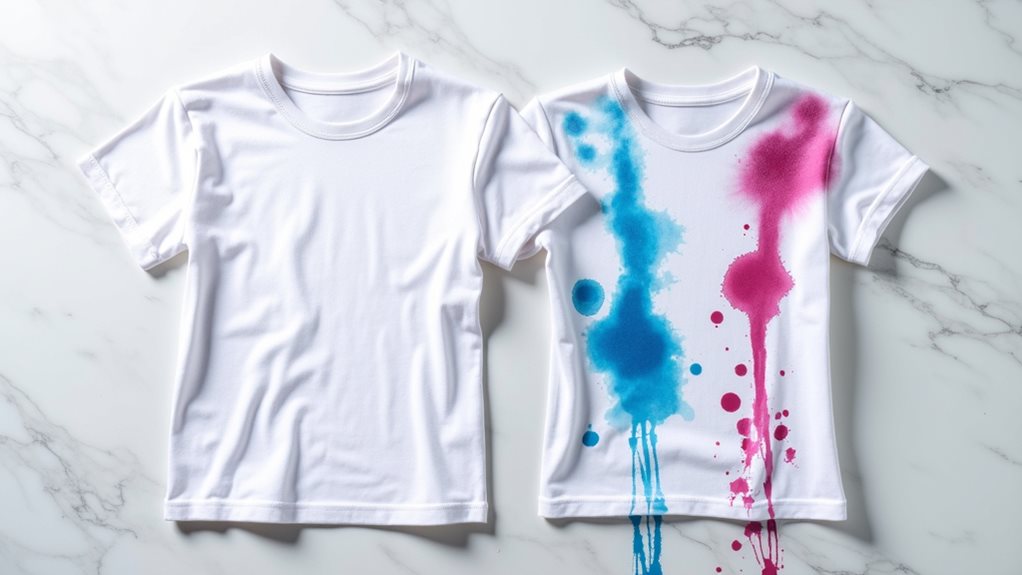
As devastating as shrinkage can be, the heartbreak of watching your carefully curated wardrobe transform into a tie-dye disaster might just eclipse it.
The agony of watching your prized wardrobe morph into an accidental rainbow of ruined fabric nightmares.
When water hits dry-clean-only clothes, you’re fundamentally playing Russian roulette with your favorite pieces. Those deep navy blazers and vibrant silk scarves become ticking time bombs, ready to bleed their gorgeous colors onto lighter fabrics or create uneven, patchy disasters across their own surfaces.
I’ve witnessed perfectly good wool coats develop permanent streaks that look like abstract art gone wrong 😅.
The cruel irony? Once color bleeding starts, there’s no going back – it’s like trying to unring a bell. While chemical solvents used in dry cleaning can effectively treat certain types of stains without the risks that come with water exposure, prevention remains your strongest strategy. Your best defense is keeping these garments bone-dry and heading straight to professional cleaners.
Shrinkage and Shape Distortion Effects
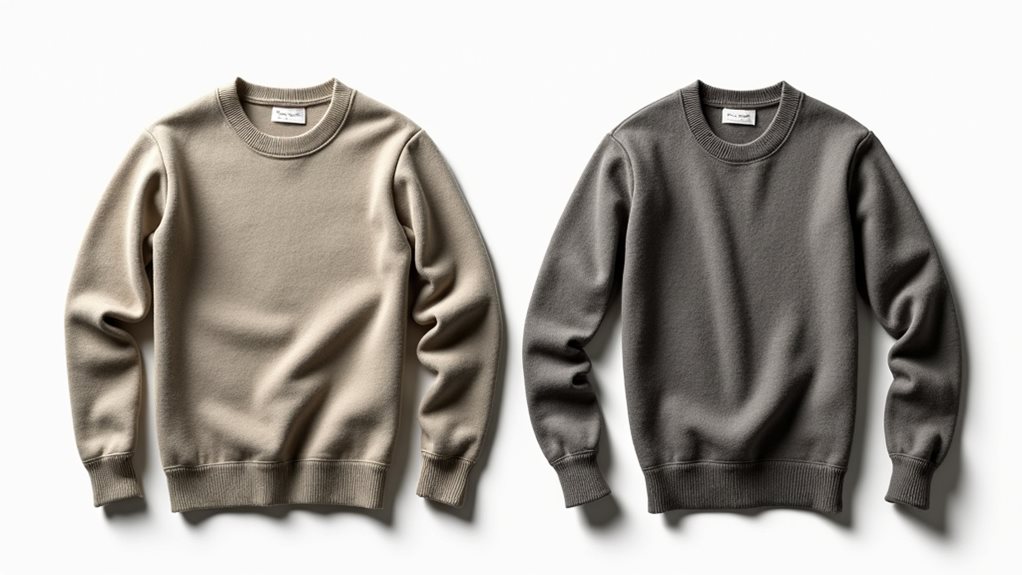
While color bleeding might break your heart, nothing quite prepares you for the gut-wrenching moment when your favorite wool blazer emerges from an accidental water encounter looking like it belongs in a child’s wardrobe.
Shrinkage isn’t just a minor inconvenience—it’s fabric torture that transforms your perfectly fitted garments into unwearable disasters. When water hits those delicate fibers, they contract and tighten like a defensive mechanism, permanently altering the garment’s dimensions.
Your dry cleaner can work miracles with stains, but they can’t reverse shrinkage damage once it’s done.
Shape distortion follows closely behind, as different materials within lined clothing react unpredictably to moisture, causing sleeves to twist, shoulders to pucker, and hems to curl in ways that defy physics and fashion sense.
Even when you attempt proper dry cleaning afterward, improper temperature control or aggressive pressing techniques can cause additional shrinkage damage to already compromised fibers.
Texture and Finish Deterioration
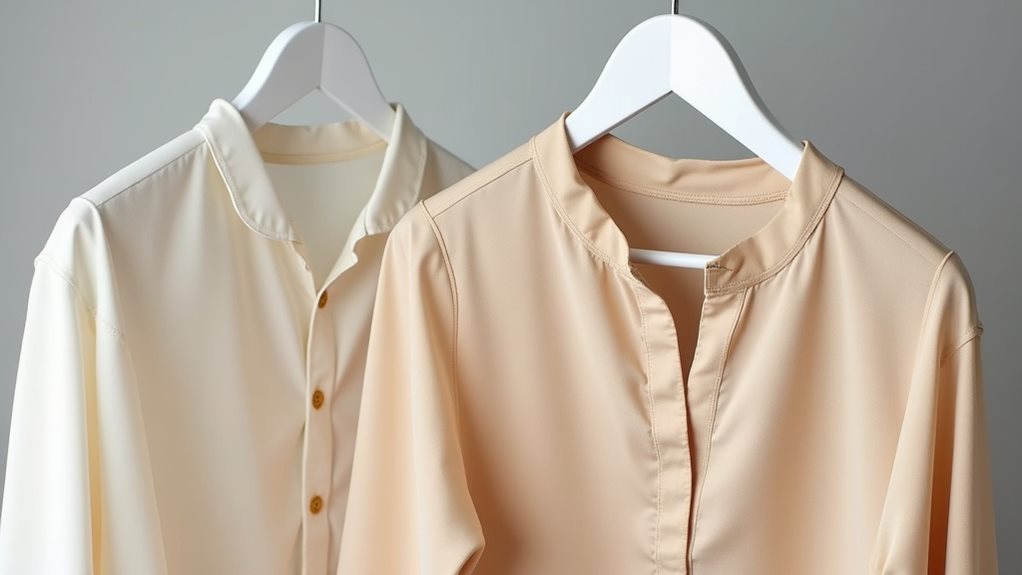
Beyond the obvious size changes, your beautiful garments face an even more heartbreaking fate when water strips away the very essence of what made them feel luxurious in the first place.
I’ve watched helplessly as my favorite silk blouse lost its lustrous sheen, transforming from elegant sophistication to dull disappointment after one unfortunate encounter with unexpected rain.
The texture and finish that once made you feel like royalty simply dissolve away, leaving behind a shadow of former glory.
Once-magnificent fabrics surrender their regal qualities to water’s merciless touch, leaving only ghostly remnants of their former luxurious splendor.
Wool sweaters become rough and scratchy, cashmere loses its cloud-like softness, and those gorgeous chemical finishes that maintained structure disappear forever.
This damage occurs because chemical solvents used in professional dry cleaning are specifically designed to clean these delicate materials without causing the structural breakdown that water inevitably creates.
Trust me, it’s better to keep your garments pristine than learn this expensive lesson firsthand!
Emergency Steps to Minimize Water Damage
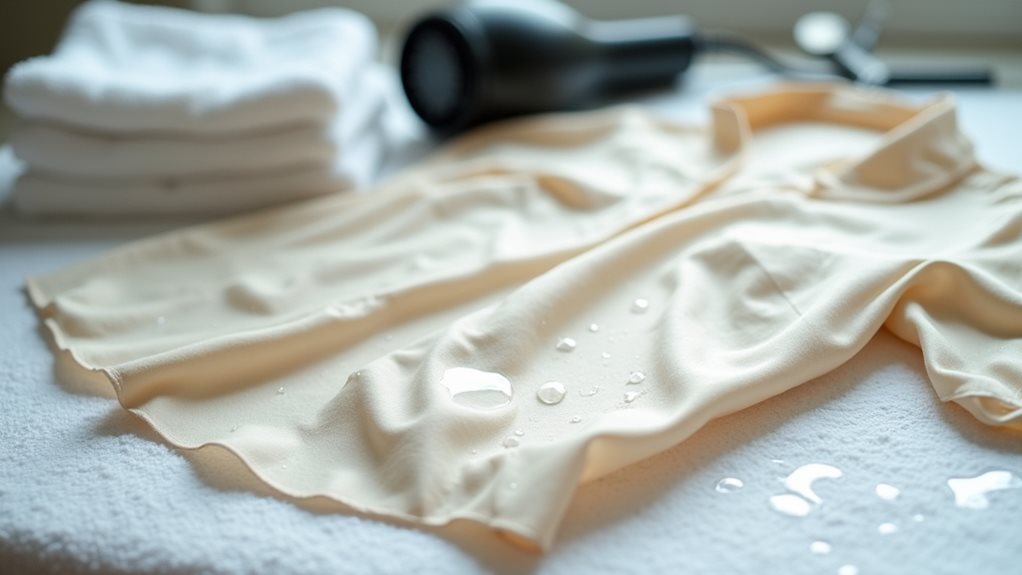
When disaster strikes and your precious dry-clean-only garment meets water, your immediate response in those crucial first moments can mean the difference between salvaging your favorite piece and watching it transform into an expensive lesson.
First, resist the urge to panic-rub the fabric—I learned this the hard way with my grandmother’s vintage blazer. Instead, gently blot with a clean, dry cloth, absorbing moisture without creating friction that damages delicate fibers.
Never wring or twist the garment, as this distorts its shape permanently. Hang it in a cool, dry spot away from direct sunlight or heat sources.
Always test any fabric spray on a hidden area first, and if stains persist, rush to your professional dry cleaner immediately.
Remember that chemical solvents used in dry cleaning don’t make your clothes waterproof, so immediate action is essential to prevent water spots and potential shrinkage.

